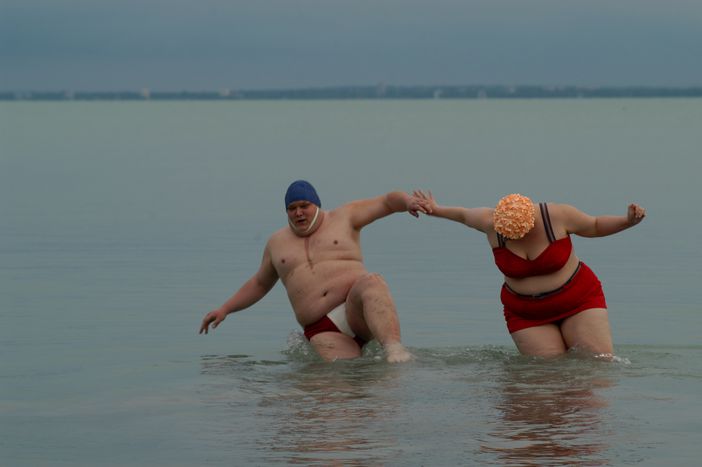
'Taxidermia': Hungarian horror film or historical allegory?
Published on
As a Hungarian film scoops second prize at the Berlin film festival 2012, we focus on a gem from 2006. Few films lend themselves to as many readings as this film from the-then 33-year-old director György Pálfi. His second movie remains a critique of modern Hungary's history through its three generations of men
The visually tantalising Taxidermia could easily be considered a 91-minute aesthetic masterpiece with stylistic links to the American-born Brit Terry Gilliam and Czech filmmaker Jan Svankmajer, not to mention hints of British director Peter Greenaway. The film follows the patrilineal line of a family that endures for three generations. Vendel Morosgovanyi (Csaba Czene), the family's founder, is a dim-witted military orderly in a remote outpost who lets himself be abused by his superior because his mind is constantly occupied with sex. When he is not being ordered about he is fantasising or masturbating about every female that passes before his eyes.
Critique of consumer society at large
Morosgovanyi's offspring, Kálmán (Gergõ Trócsányi), competes with speed eaters from around the world during the soviet era as his body weight continues to rise. He eats so much that by the time he retires he can no longer move about freely. Kálmán's son, the final member of the family, is a gaunt and lanky man named Lajos (Marc Bischoff), who works as a taxidermist. He embalms animals for a living and when he accidentally leaves the gate open on his father's giant cats, allowing them to eat the immobile father, he embalms the father and the cats as well. Eventually Lajos decides to embalm himself by building a machine that will keep him alive as he individually prepares each limb of his body.
György Pálfi was a guest of the cafebabel Budapest team during their annual Sziget festival coverage in 2007
First screened in Europe at the Cannes film festival in 2006, the Hungarian-Austro-French production is an allegory of contemporary society in general. The first generation, which seeks to plant its seed any place it can, is comparable to the shortsighted masculine colonial mentality which didn't seem to care where it landed, just as long as reckless imperial expansion continued. The second generation quite literally represents the consumer society, eating and swallowing everything (usually imported from former colonies) it can get its hands on regardless of the consequences. In a way this widespread consumerism emulates the previous European colonial mentality by encouraging people to amass objects instead of continents. The second generation went from amassing material objects, which have now filled their apartments and garages, to consuming edibles, from pills to hamburgers. Now instead of clogged apartments there are clogged veins and pores.
The final generation, or modern day, is the inevitable collapse of the previous generation which has lost its ability to sustain its appetite and has nowhere left to expand (except down to the cellular level). Like Lajos, the previous generation consumed so much that there is nothing left to fuel further expansion and we are now contracting in upon ourselves. Like Lajos we have finished in a complicated machine that is allowing us to cut off our limbs (via austerity measures) while we stitch up the wounds on a cadaverous consumeristic experiment. We remain focused on preserving our system - dead or alive - for yet another generation, yet the next generation will probably put us on display in a museum as some sort of novelty as they did in the film with Lajos.
Released in France, Belgium, the Netherlands, Hungary, Norway and Germany in 2006, in Austria, Spain, Portugal, UK, and Greece in 2007, and in Finland in 2008
Image: (cc) Taxidermia official site



